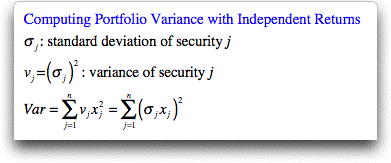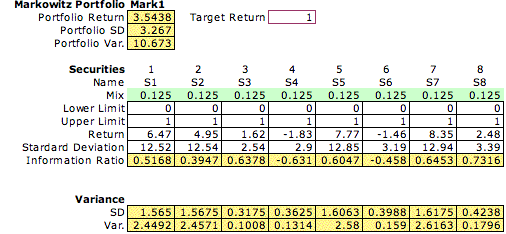When the security
returns are independent, the value of the return for one security
does not provide any information about the values of the others.
Although this is probably not a good assumption for investment
securities, consideration of the independent case provides
justification for the policy of a diversified portfolio.

The variance of the portfolio is sum of the variance
contributions of the individual securities. An individual contributes
the variance of the security multiplied by the square of the
proportion. Since proportions are all less than 1, low variance
solutions are comprised of a mix of all available securities.
A randomly generated example provides an illustration.

Considering the solutions on the efficient frontier,
we see that the solution with the smallest standard deviation
has representatives from all the securities, even those with
a negative return such as S4 and S6. As more and more return
is demanded from the portfolio, these securities drop from
the mix. The highest return portfolio has a single security,
S7, and the greatest standard deviation.

|



